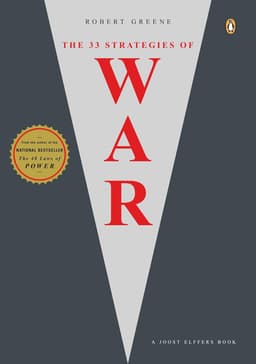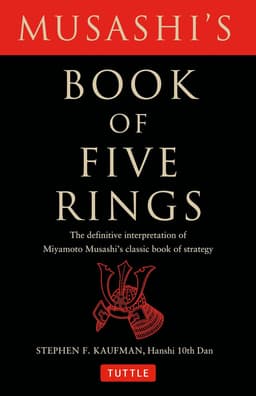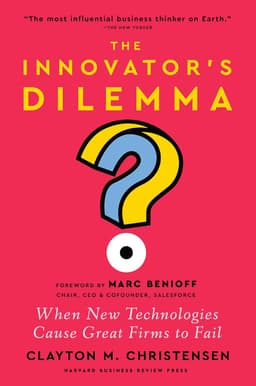Are you captivated by the strategic wisdom in 'The Art Of War'? If so, you’re in the right place. This article presents 14 books like 'The Art Of War' that delve into military tactics, military history, business strategies, and personal development. Each book offers practical insights to enhance your strategic thinking.
Key takeaways
Sun Tzu’s 'The Art Of War' emphasizes adaptability, strategic planning, and understanding adversaries, which are also central themes in other classic strategy texts.
Key strategic concepts across these works include the importance of psychological insight, the need for thorough planning, and the balance between action and inaction.
Many of the highlighted books draw parallels to 'The Art Of War' in their focus on leadership, power dynamics, and the significance of self-awareness in navigating complex situations.
What is 'The Art Of War' about
Sun Tzu’s 'The Art Of War' is a seminal guide on military strategy that has withstood the test of time. Written over 2,500 years ago in ancient China and translated into numerous languages, including English, this Chinese classic is composed of concise aphorisms that explore the intricacies of warfare, emphasizing the importance of adaptability, strategic planning, and understanding one’s own strengths and weaknesses.
This work has profoundly influenced both Eastern and Western military thought since its principles are not confined to the battlefield alone. Furthermore, this work has shaped the strategies of many influential leaders, including Mao Zedong, who applied its principles during the Chinese revolution. The principles described in the book are equally applicable to business, leadership, and various competitive scenarios.
The book delves into the psychological aspects of conflict, highlighting the use of deception and the need for thorough planning. Sun Tzu teaches that understanding the environment and one’s adversary is crucial for success. He famously emphasizes that the greatest victory is that which requires no battle, advocating for strategic maneuvers over brute force. This wisdom resonates with the idea that true power lies in the ability to influence and outmaneuver opponents without direct confrontation.
At its core, 'The Art Of War' is about achieving victory through intelligence and strategic thinking. Its timeless advice by one of the greatest military strategists of all times remains relevant today, offering valuable lessons for anyone looking to navigate the complexities of modern life with finesse and insight.
Best books similar to 'The Art Of War'
If you’ve been inspired by the strategic brilliance of 'The Art Of War', you may be searching for other books that offer similar insights into strategy, leadership, and conflict resolution. The following list highlights some of the best books that echo the themes found in Sun Tzu’s classic work. Each of these book recommendations has been carefully selected for its relevance to those who seek to refine their strategic thinking and apply it in various aspects of life, whether on the battlefield, in business, or in personal growth.
1. 'The Prince' by Niccolò Machiavelli
Machiavelli’s 'The Prince' is a political treatise that distills strategies for leadership and power acquisition. Written in the early 16th century, it draws heavily on historical examples, including Roman leaders, offering pragmatic advice on governance and suggesting that ethics should be set aside for effective rule. Machiavelli’s work underscores using fear as a tool for control and suggests brutal tactics when essential to maintain power.
Similar to Sun Tzu’s 'The Art Of War', 'The Prince' highlights the significance of strategic maneuvering. Machiavelli recommends leaders to be cunning and adaptable, capable of shifting tactics as situations change. This aligns with Sun Tzu’s emphasis on flexibility and understanding one’s environment to achieve victory without direct confrontation.
Similarities between the books:
Both books emphasize strategic planning and adaptability.
They highlight the importance of understanding and manipulating one’s environment.
Both texts suggest that ethics can be secondary to achieving strategic goals.
2. 'The Lean Startup' by Eric Ries
Eric Ries’s 'The Lean Startup' introduces a methodology for launching and managing startups that emphasizes adaptability and systematic processes. Rooted in the American entrepreneurial spirit, the core concept involves creating a Minimal Viable Product (MVP), gauging customer responses, and learning from the results to validate business directions. This approach ensures that startups can pivot strategies based on empirical data rather than assumptions.
Similarities between the books:
Both emphasize the importance of adaptability and learning.
They advocate for systematic and strategic planning.
Both texts provide frameworks for achieving success through strategic thinking.
3. 'Tao Te Ching' by Laozi
The 'Tao Te Ching' by Laozi is a profound text offering insights on leadership, ethics, and the philosophy of inaction. It promotes reflection and balance, helping individuals navigate life’s complexities with a calm and harmonious approach. Laozi’s emphasis on living in harmony and balance aligns with Sun Tzu’s teachings on understanding and adapting to one’s environment.
Similarities between the books:
Both texts offer wisdom on leadership and strategy.
They emphasize the importance of balance and harmony.
Both promote a reflective and thoughtful approach to life’s challenges.
4. 'The 48 Laws Of Power' by Robert Greene
'The 48 Laws Of Power' by Robert Greene analyzes power dynamics through historical examples, providing practical advice on navigating power relationships. The book is organized around forty-eight principles, each illustrated with anecdotes simplifying complex ideas. It emphasizes understanding social interactions in various contexts, similar to Sun Tzu’s focus on psychological strategy in conflict.
Greene’s work, similar to 'The Art Of War', is often seen as a guide to leadership, highlighting the importance of subtlety and reflection in exercising power.
Similarities between the books:
Both analyze power dynamics and strategic interactions.
They emphasize the importance of subtlety and psychological insight.
Both use historical examples to illustrate their principles.
5. 'Meditations' by Marcus Aurelius
Marcus Aurelius’s 'Meditations' offers profound insights grounded in Stoic philosophy, focusing on introspection and the nature of leadership. Stoic philosophy emphasizes resilience and rationality, advocating for a focus on what one can control in life. Aurelius’s emphasis on self-improvement and virtue in leadership echoes themes later explored by Nietzsche, particularly the idea of overcoming oneself to achieve greatness. His writings align with Sun Tzu’s teachings on self-awareness and strategic thinking, making 'Meditations' a valuable complement to 'The Art Of War'.
Similarities between the books:
Both emphasize self-awareness and strategic thinking.
They advocate for emotional control and resilience.
Both texts offer insights into effective leadership.
6. 'Man's Search For Meaning' by Viktor E. Frankl
Viktor E. Frankl’s 'Man's Search For Meaning' is a profound exploration of finding purpose in life, even amidst suffering. Frankl suggests that meaning can be found through work, love, and suffering, a concept central to his therapeutic approach, logotherapy. His idea of ‘tragic optimism’ emphasizes the importance of maintaining hope despite adversity.
Similarities between the books:
Both emphasize finding purpose and meaning.
They highlight the importance of resilience and hope.
Both texts provide guidance on navigating life’s challenges.
7. 'On War' by Carl von Clausewitz
Carl von Clausewitz’s 'On War' is a cornerstone of military strategy literature and a key text in German military thought, defining war as a large-scale duel where the objective is to disarm the opponent through force. Clausewitz, a prominent German military theorist, introduces the concept of ‘friction’ in war, where simple objectives become complicated due to unforeseen challenges. His work emphasizes that war is a series of reciprocal actions influenced by political decisions, not an isolated event.
Clausewitz presents the idea of the ‘fog of war,’ highlighting the uncertainty commanders face regarding their opponent’s capabilities and intentions. His claim that maximum physical power is vital in war contrasts with Sun Tzu’s preference for strategy and deception, yet both agree on the crucial role of thorough planning and adaptability in achieving success.
Similarities between the books:
Both explore the complexities and uncertainties of warfare.
They emphasize the importance of strategic planning and understanding the environment.
Both texts provide insights into the psychological aspects of conflict.
8. 'The 33 Strategies Of War' by Robert Greene
Robert Greene’s '33 Strategies Of War' is a comprehensive guide that draws from historical strategies for war, business, and personal growth. The book aims to equip individuals with the tools to overcome obstacles and achieve their goals. Each strategy is presented in detail, illustrated through stories and examples, making the complex ideas accessible and practical.
The book categorizes strategies such as Self-Directed Warfare and Defensive Warfare, emphasizing the need to assess situations objectively without emotional interference. This resonates with Sun Tzu’s advocacy for clear-headedness and strategic thinking.
Similarities between the books:
Both provide comprehensive guides to strategy.
They emphasize the importance of objective assessment and clear thinking.
Both texts use historical examples to illustrate their points.
9. 'The Republic' by Plato
Plato’s 'The Republic' explores the nature of justice and the ideal society, proposing that philosopher-kings should be the rulers. Over time, this foundational Greek text has given rise to numerous commentaries, particularly on its Allegory of the Cave, which illustrates the difference between the world of appearances and reality. Plato’s vision of a just society revolves around communal living and the common good, emphasizing the pursuit of knowledge as foundational for justice.
Similarities between the books:
Both explore themes of leadership and justice.
They emphasize the importance of knowledge and understanding.
Both texts propose ideal principles for a well-organized society.
10. 'Extreme Ownership' by Jocko Willink and Leif Babin
'Extreme Ownership' by Jocko Willink and Leif Babin focuses on leadership principles derived from Navy SEAL experiences, emphasizing that leaders must take full responsibility for their team’s outcomes. The book highlights the importance of accountability and discipline in transforming team performance. Willink and Babin stress that simplicity in leadership is essential, as complex plans can hinder understanding and execution.
Similarities between the books:
Both emphasize the importance of leadership and accountability.
They advocate for clear and simple strategic planning.
Both texts provide practical advice for effective team management.
11. 'The Book Of Five Rings' by Miyamoto Musashi
'The Book Of Five Rings', written by the legendary swordsman Miyamoto Musashi, offers deep insights into martial arts and strategy. Reflecting on his life and victories in over 60 duels, Musashi attributes his success to a pragmatic approach rather than extraordinary skill. The text teaches the importance of focusing on essentials and disregarding the non-essential, a principle that aligns with Sun Tzu’s emphasis on efficiency and precision.
Musashi’s great book reflects on 'the way,' promoting harmony with nature and a direct, pragmatic approach to life’s challenges. His teachings, akin to Sun Tzu’s, advocate for a clear and focused mind, crucial for any strategist.
Similarities between the books:
Both emphasize strategic thinking in conflict.
They advocate for focusing on essential elements and efficiency.
Both texts highlight the importance of understanding one’s environment and oneself.
12. 'The Innovator's Dilemma' by Clayton M. Christensen
Clayton M. Christensen’s 'The Innovator's Dilemma' explores why successful companies often struggle with disruptive innovations, emphasizing that traditional management practices can hinder adaptability. Christensen argues that established firms fail not due to a lack of resources but because their operational processes obstruct the pursuit of lower-margin opportunities. Disruptive technologies often begin in niche markets before gaining traction in mainstream markets.
For companies to successfully innovate, they must align their resources and incentives towards fostering small-scale innovations. Christensen argues that recognizing the intrinsic capabilities and limitations of an organization is crucial when facing disruptive changes.
Similarities between the books:
Both emphasize the importance of adaptability and strategic innovation.
They highlight the need to understand and leverage one’s strengths and weaknesses.
Both texts provide insights into navigating complex and competitive environments.
13. 'Thinking, Fast And Slow' by Daniel Kahneman
Daniel Kahneman’s 'Thinking, Fast And Slow' analyzes two systems of thinking: quick, instinctive reactions (System 1) and slow, deliberate thought (System 2). Kahneman discusses how cognitive biases like overconfidence and anchoring can distort decision-making, complicating choices. The concept of ‘loss aversion’ highlights that the fear of losses often outweighs the potential for equivalent gains, influencing decision-making processes.
Understanding these cognitive biases is vital for making informed decisions, as both intuitive and logical systems of thought influence our judgment simultaneously. Kahneman’s work, much like Sun Tzu’s, underscores the importance of strategic thinking and self-awareness in navigating complex situations.
Similarities between the books:
Both explore the complexities of decision-making and strategy.
They emphasize the importance of understanding one’s cognitive processes.
Both texts provide valuable insights into strategic thinking and planning.
14. 'The Art Of Peace' by Morihei Ueshiba
Morihei Ueshiba’s 'The Art Of Peace' promotes a nonviolent approach to conflict resolution, contrasting with the aggressive strategies found in 'The Art Of War'. Ueshiba, the founder of Aikido, teaches that true strength lies in compassion and harmony, suggesting that harming opponents ultimately harms oneself. His teachings emphasize patience and perseverance, advocating for a holistic view on peace and personal development.
Similarities between the books:
Both offer profound insights into strategy and conflict resolution.
They emphasize the importance of understanding and harmony.
Both texts advocate for strategic thinking in navigating life’s challenges.
Read more books similar to 'The Art Of War' with Headway
For those with busy lives, finding the time to read extensive strategic texts can be challenging. The Headway app provides summaries and insights from strategically focused books like ‘The Art of War’ by Sun Tzu, making them accessible for individuals on the go. With audiobook versions of these strategic titles, Headway facilitates learning even during commutes or daily routines.
Headway provides personalized reading insights and daily recommendations to help users expand their understanding of strategy and power dynamics. Subscribing to Headway keeps readers informed and inspired, enhancing their strategic thinking skills and providing valuable strategic insights without the time-intensive commitment. Join Headway and read or listen to your favorite books on the go.
Summary
In conclusion, the timeless wisdom found in Sun Tzu’s 'The Art Of War' continues to resonate in modern times, offering invaluable lessons on strategy, leadership, and conflict resolution. The 15 books highlighted in this blog post each provide unique perspectives that complement and expand upon Sun Tzu’s teachings.
From the pragmatic advice of Machiavelli’s 'The Prince' to the reflective insights of Marcus Aurelius’s 'Meditations', these texts offer a wealth of knowledge for anyone looking to master the art of strategic thinking. Whether navigating the complexities of business, leadership, or personal growth, these books serve as essential guides for achieving success through strategic planning and thoughtful decision-making.
Dive into these strategic masterpieces and unlock the potential to navigate life’s challenges with wisdom and finesse. The journey of strategic mastery awaits.
Frequently Asked Questions
What is the main theme of 'The Art Of War'?
The main theme of 'The Art Of War' is military strategy, emphasizing adaptability and thorough planning to understand strengths and weaknesses for achieving victory. This approach advocates for overcoming challenges without direct confrontation.
How does 'The Prince' compare to 'The Art Of War'?
'The Prince' is more centered on political strategy and power dynamics, while 'The Art Of War' emphasizes military tactics and strategy. Both texts provide practical insights, but their applications differ significantly.
What is the focus of 'The Book Of Five Rings'?
'The Book Of Five Rings' emphasizes martial arts and strategy, highlighting the significance of essential elements and practical problem-solving. It serves as a guide to achieving mastery in combat and life.
How does 'Meditations' by Marcus Aurelius relate to strategic thinking?
'Meditations' by Marcus Aurelius highlights the importance of self-awareness, resilience, and emotional control, which are vital components of effective strategic thinking and leadership. These Stoic principles can enhance decision-making and long-term planning.
What is the benefit of using the Headway app for reading strategic books?
Using the Headway app allows you to gain quick insights and summaries from strategic books, making it easier to fit learning into a busy schedule. This enhances your strategic thinking skills through accessible and personalized content.














